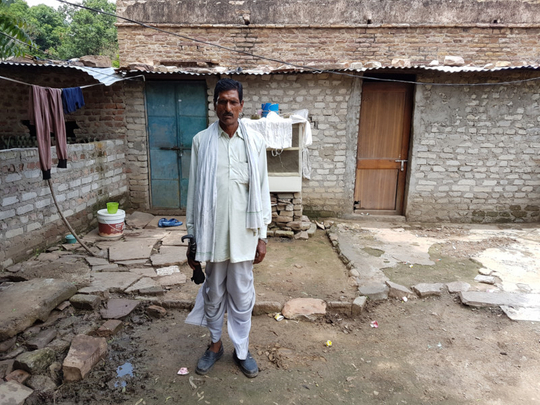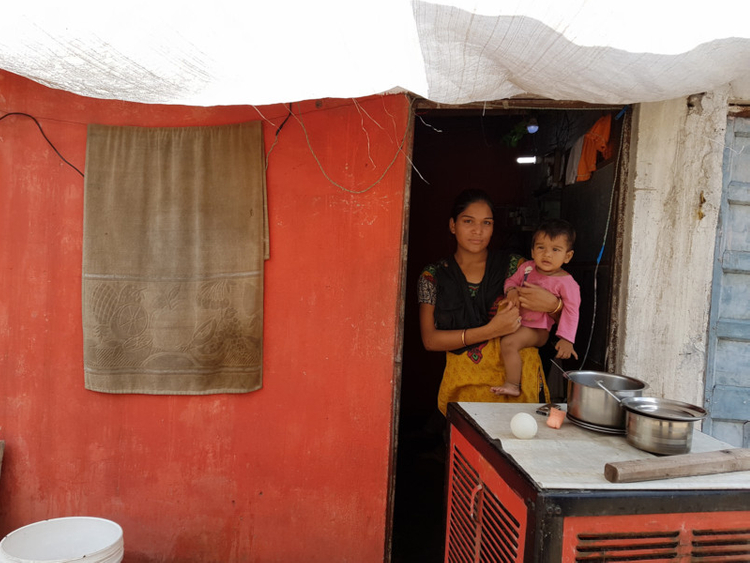
Latoor Lal has been serving a life sentence for murder in Kota central jail since 2007. Two years ago, the 55-year-old convict was moved to an open-air prison camp, where he built a house for himself by spending Rs25,000 (Dh1,419). His prison term will end in 2022 and until then he will live in this house. The house built by Asif aka Sonu is smaller than Lal’s, and he spent Rs8,000 building it. His wife Farzana, 33, stays with him in the jail.
Indian prisoners with good behaviour who satisfy certain norms in the prison rules can serve their time in open prisons. At present, there are 63 open jails in India. Most of them are in the state of Rajasthan, which has 29, followed by Maharashtra, which has 13.
In 2014, the Rajasthan prisons department allowed convicts in open-air camps to construct cottages for themselves at their own expense to make up for lack of government-built cottages. These one-room, tin-roof houses with electricity and water connections are paid for by the convicts. Most of these houses are small, simple structures.
In 2015, however, the Rajasthan High Court stopped the practice because it was creating a class divide among the prisoners. The court observed that people who had money built better houses than others who could afford only shanties. Indeed others, who didn’t have money even for those, shared houses with more than one prisoner. But between 2014 and until the court order in 2015, many cottages had already been built in camps across Rajasthan.
In Kota, there were 15 government-built cottages when the open jail was set up in 2005. By the end of 2015, when the court ban came into effect, 45 new ones had been built, says Prithvi Singh Hada, who runs the camp.
Open-air camps for prisoners is a novel step adopted by the state government to aid the rehabilitation of prisoners. Eligible convicts are sent to open-air camps with the aim of making them learn self-dependence and enhancing their social interaction. Female prisoners are also allowed to live with their families in the camps. Prisoners staying in open jails with their families become more rule abiding and relaxed, officials say.
‘Half-way homes’
Ajit Singh, former head of the prisons department in Rajasthan, says open-air camps are useful missing links in the corrections process, and serve the purpose of ‘half-way homes’ or ‘transit homes’ between the closed institutionalised treatment of convicts and free society.
“In open camps, it is mandatory for the convict to live with his family because living with the family is a big moderation in itself. The family’s presence avoids many unwanted distractions that a person may otherwise indulge in. The prisoners have to attend a roll call each morning and evening at a fixed time,” he says.
Central jails in India are jails where prisoners sentenced to more than two years imprisonment are kept. There are 134 such jails in the country, with eight in Rajasthan. District Jails are the biggest prisons in districts.
According to Prison Statistics India 2015 report, most Indian jails are overcrowded — the occupancy rate in central jails of the country is at 116.4 per cent. But the open-air jails are now crowded too, and the occupancy rate of 63 open jails in India is around 70 per cent. For example, in Rajasthan, the capacity of 29 open-air jails is 1,325 prisoners, while these house 1,127 convicts, including 55 women, according to figures released by the National Crime Records Bureau, affiliated to the Ministry of Home Affairs of India.
Convicts who were moved to open-air camps after 2015 moved into cottages vacated by prisoners who had been released, and Prakash Kumar, 38, is one such beneficiary. He was transferred to the camp in 2016 and moved into a cottage constructed by another prisoner who had moved to a better house in the same campus.
In Kota open jail, out of the 45 prisoners who build the cottages, 23 have been released. The remaining 22 will also complete their sentences soon, and every year, 10 to 15 prisoners are moved to open-air camps, so most cottages remain occupied.
For some prisoners, despite the temporary nature of the homes, it’s an investment well worth making. Farzana thinks the Rs8,000 spent on their home was nothing compared to the joy of living with her husband.
Sometimes, interesting experiences emerge from these open-air prison camps. In June 2016, 18-year-old Peeyush Meena got admitted to the prestigious Indian Institute of Technology (IIT) after he stayed with his father, Phool Chand, in an open jail. Chand, a government schoolteacher, lost his job when he was arrested in 2000 on the charge of murdering the village sarpanch. In 2003, Chand — along with his younger brother and three nephews — was convicted of murder and sentenced to life.
In 2014, after Chand had spent 11 years in Kota central jail, he was moved to an open jail. When his son Peeyush enrolled for a coaching class in Kota to prepare for the IIT entrance exam, he needed a place to stay. He didn’t have the means to pay for a hostel so he moved in with his father in the open jail, and fulfilled his IIT dream.
The prison cell was small but Peeyush made the most of it. Most evenings, his father would sit outside the gate to ensure that his son was not disturbed. “My father would sit outside the cell while I studied — sometimes as late as 2am — and come into the cell only when I was getting ready to sleep,” says Peeyush.
Apart from his impressive performance at the IIT-JEE examination, the youngster is looking forward to his father’s release. “My father will complete his sentence in 2017 and his ordeal will finally be over,” Peeyush says happily. “He will be a free man by the time I graduate from IIT and start working.”
Most of those who constructed the cottages know the money they spent on building them will fetch no returns except for the fact that it gave them a decent facility to live in.
“Although I have constructed it with my own money I would be more than happy to leave it and go back to my home in Baran district,” Shrikrishna Lodha says. He’ll soon complete his jail term at Kota where he has been serving life for murder since 2004.
When he was transferred to the open jail in 2014, there was no room available and he had to share living spaces with other inmates. Fortunately, that year the government allowed the convicts to build their own cottages, and Lodha spent Rs20,000 on his cottage. “I pulled a rickshaw in Kota city to earn for the cottage. I even borrowed some money from my family,” he adds.
Meanwhile, Latoor Lal steps out every morning after the 6am roll call and works at construction sites in the city to come back with some well-earned money to sleep peacefully in his prison cottage bed.
Rakesh Kumar is a writer based in Jaipur, India.













